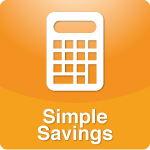
The Check Out Check Up
The Dollar Stretcher
by Gary Foreman
gary@stretcher.com
Dear Dollar Stretcher,
My family is really struggling with our budget. We are a family of five spending approximately $500 per month on groceries and household items. Do you think we could do better? I use coupons, buy only generic and sale items at the local grocery store. What else can I do?! Would I save more money or get more for my money if I shopped at the big warehouses like Priceclub?
Pam
According to the U.S. Statistical Abstract the average large family (five or more) spent $405 per month on food eaten at home. Pam and her family probably are a bit on the high side. So what can she do to reduce the amount she contributes to her local grocery store?
The first thing to consider is the non-food items that end up our grocery carts. Most of us are in the habit of picking up cleaning supplies and paper products when we grocery shop. And that's a good way to boost your bill.
At your grocer you'll find shelf after shelf of specialty cleaning products. Check the ingredients. They're all pretty similar. Most cleaners contain a combination of ammonia, vinegar, baking soda, bleach and a generous helping of good old-fashioned water. They also add a fragrance so that things smell clean after you've done your work.
You can save some money by making your own cleaners. Recipes are available in books, magazines and on the web. Most are simple and just as effective as what you'd buy in the store. If you really don't want to mix your own, then at least locate a janitorial supply store. Most will sell to the public. They carry industrial strength and concentrated cleaners. You won't get pretty packaging, but you will get more cleaner per buck.
Now on to the food in Pam's grocery cart. Next time you return from the grocery store take a look at what you bought. Pay specific attention to 'convenience' items.
You won't find this definition in Webster's Dictionary, but it's the one that the food conglomerates use. When they call something a 'convenience' food, it means that they're going to charge big bucks and the consumer won't complain. In fact, we'll thank them for saving us some time!
Examine your purchases. How much of your money is really buying something that you're going to put in your mouth and swallow? And how much is going to packaging, individual serving sizes and 'convenience'? I don't ever recall seeing convenience on a nutrition chart!
If you want a shock compare the price per pound of a whole ham and the sliced ham at the deli counter. Sure, for some people being able to buy just a few slices justifies the higher price. But a little thought here could open up a whole new way to look at shopping.
Pam mentions that she's using coupons. Depending on where you live coupons may be helpful. In some areas stores still double coupons or allow you to use both a manufacturer's and a store coupon on the same item. That can make a big difference and is well worth the time spent.
But, even without doubled savings, coupons can help. Some families insist on nationally advertised brands. Coupons can reduce the name brand cost to the price of the generic equivalent.
Warehouse clubs can be a help, too, but you need to be careful in how you use them. First, and this is obvious, don't buy food that you're not going to use. Buying more than your family needs is wasteful no matter how cheap the item is. We almost instinctively think that bigger is better. That's not always true.
Secondly, do not assume that buying a large size will reduce your per unit cost. Sometimes it's true and sometimes it isn't. Manufacturers know that we assume that the 'large economy size' is the best value. And sometimes they take advantage of that. Always compare the per unit costs. Not only between the large and small package sizes, but between your local grocer and the big warehouse stores.
Finally, Pam can take advantage of something that no professional buyer would be without. That's a price book. When a buyer gets ready to place an order they know when they've bought in the past, who they purchased from and how much they paid. That information is priceless.
Pam doesn't need a fancy system to take advantage of the same information. A simple three-ring binder will do. Use one page for each item that you buy on a regular basis. As you shop compare the prices you see to the appropriate page in your price book. If the price you find is low, add a new line showing the date, store and unit price. And stock up on the item. You've found a bargain.
But, often you'll find an item with a big 'sale' sign that's still more expensive than the low prices in your book. That's the time to buy only enough for current needs. It's not uncommon for people to save up to 20% on their grocery bills by using a price book.
It sounds as if Pam is already starting to take control of her food spending. Here's to healthy diet and a healthy budget for her family.
Gary Foreman is a former purchasing manager who currently edits
The Dollar Stretcher website
. You'll find hundreds of free articles to stretch your day and your budget. Permission granted for use on DrLaura.com.